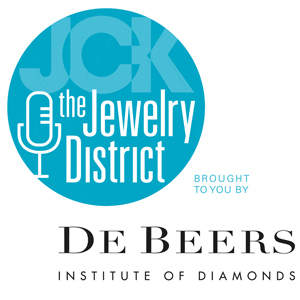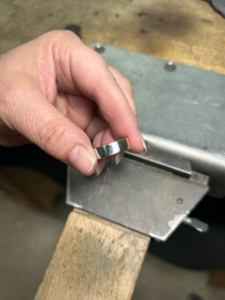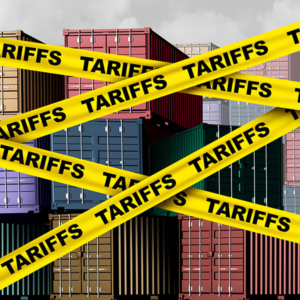
JCK editor-in-chief Victoria Gomelsky updates news director Rob Bates on her visit to Miami with Platinum Guild International, where she got the chance to design her own ring and gained a better understanding of the joys and challenges of working with platinum. Rob brings listeners up to speed on an alarming trend of lab-grown diamonds masquerading as naturals through carelessness or deliberate deception—and he offers tips to help jewelers protect themselves. Finally, Victoria gears up for the Tucson gem shows, where aquamarines are expected to be a popular choice.
Listen Now
Sponsored by De Beers: institute.debeers.com
Show Notes
02:44 Platinum jeweler for a day
11:31 Need grows for lab-grown diamond detection
17:54 All eyes on Tucson
Episode Credits
Hosts: Rob Bates and Victoria Gomelsky
Producer and engineer: Natalie Chomet
Editor: Riley McCaskill
Plugs: @jckmagazine; institute.debeers.com
Show Recap
Platinum jeweler for a day
Victoria discusses her recent trip to Miami with Platinum Guild International, where she got a hands-on lesson in what makes the silvery white metal unique. Platinum has a reputation for being challenging to work with—and for good reason, as Victoria discovered.
In a workshop run by the Miami Jewelry School’s Marc Thurn, Victoria and her fellow trade press editors got a seat at the bench, where they attempted to turn sticks of platinum into rings. For Victoria, whose tactile experience in the jewelry world has been much more limited than her reporting work, it was an eye-opener about the nuances of metalworking. Not only did she realize how much less malleable platinum is than other popular jewelry metals like gold, but she was struck by the fact that it hardens as you work with it.
After hammering, shaping, filing, polishing, and getting considerable help from her instructors, Victoria created a band that she now enjoys pairing with her favorite spinel ring. The bench time was fascinating and turned her into an advocate for platinum, she says.

Need grows for lab-grown diamond detection
Rob and Victoria’s conversation shifts to an unsettling trend involving people attempting to pass off lab-grown diamonds as natural. With the price gap between the two markets widening, disguising lab-grown diamonds as natural ones becomes more tempting, so “I think it’s possible these incidents will increase,” Rob says. Such mislabeling is illegal, he warns.
Some cases of mistaken identity arise through carelessness, others through deceit. One technique among unscrupulous dealers is to get a natural diamond with an inscription, then cut a lab-grown with similar specifications and put a counterfeit inscription on it, even including a real laboratory’s name to make it more convincing. “That is clearly fraud,” Rob says. “We’ve seen situations where people have been prosecuted.”
At times, it’s impossible to know how certain lab-grown diamonds got mislabeled as natural ones. He cites an anecdote shared at the Diamond Dealers Club about a parcel of 300 carats of four-grainers, one of which turned out to be synthetic. The dealer was reputable, so the source of the misplaced diamonds remained a mystery.
Fortunately, the New York diamond industry is starting to install screening machines, Rob says. Jewelers can bring diamonds with inscriptions or grading reports to GIA’s lab in midtown Manhattan, and the institute will test them to make sure they match. IGI offers a similar service, where experts can tell jewelers whether the diamonds they bring in are natural or lab-grown within 24 hours. Rob also recommends people go to the Natural Diamond Council’s website for the Assure directory of diamond testing machines currently on the market, which outlines the efficacy of each.
The bottom line? As a jeweler, you need a process to ensure that everything you sell is what it’s supposed to be. Anyone without protocols in place to protect themselves is at risk.
All eyes on Tucson
Looking west to the Tucson gem shows, Victoria expects prices to hold firm and foresees no dramatic new finds hitting the market, though she concedes that “you don’t really know until you get there.” She recently talked with Stuart Robertson of Gemworld International, who expects aquamarine to be a popular choice this year.
Victoria also notes that there are more jewelry fairs taking place in Tucson this winter than in past years. Among them are the Pueblo Gem & Mineral Show, the Ethical Gem Fair, Melee, GJX, and newcomer Out of the Jewel Box Experience. She promises to give a report from Tucson on an upcoming podcast and informs listeners that The Jewelry District’s next guest will also be a Tucson alum.
Any views expressed in this podcast do not reflect the opinion of JCK, its management, or its advertisers.
- Subscribe to the JCK News Daily
- Subscribe to the JCK Special Report
- Follow JCK on Instagram: @jckmagazine
- Follow JCK on X: @jckmagazine
- Follow JCK on Facebook: @jckmagazine





